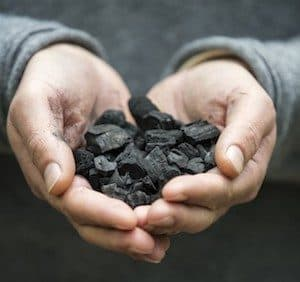
The Willamette Valley is responsible for 99% of the hazelnuts produced in the United States. Hazelnut shells are a byproduct of hazelnut processing and are often sold as mulch or blended into livestock pellets. An alternative use for these hazelnut shells is proposed.
Biochar is a relatively new and upcoming technology. When biomass is heated in an anaerobic (oxygen-free) environment, bio-oil and biogas is driven off, leaving a porous solid carbon. When biochar is added back to soil, the pores help retain water and nutrients available for plant life while also acting as a carbon sink, as carbon gets sequestered in the ground. The biogas can be incinerated and used to heat the pyrolysis process, making the whole system autothermal. For the pyrolysis of hazelnut shells, excess energy is available and can be used in other processes. This excess energy is used in the drying stage of processing as whole hazelnuts nuts must be dried before being shelled and roasted. The excess energy captured from the pyrolysis is used to heat air, which is blown over the nuts, reducing their moisture content.
The specific reactor that was chosen is an auger reactor from a German company called PYREG. The unit is a whole in one system designed to produce biochar and generate excess thermal energy. An extra heat exchanger was designed to heat air dedicated to the hazelnut drying process. The modularity of the unit is also a benefit, as multiple units can be connected in parallel. One unit is recommended as a beta test for the market, additional units can be installed to meet the growing demand and increase profits.
An economic analysis on the system as well as a market study for biochar was completed to assess the feasibility and profitability of the system. Based on conservative US biochar market prices, metrics such as Net Present Value and Payback Period indicate that the implementation of the system would be a successful investment with a return on investment under 5 years.
| Attachment | Size |
|---|---|
| 17.49 MB |

